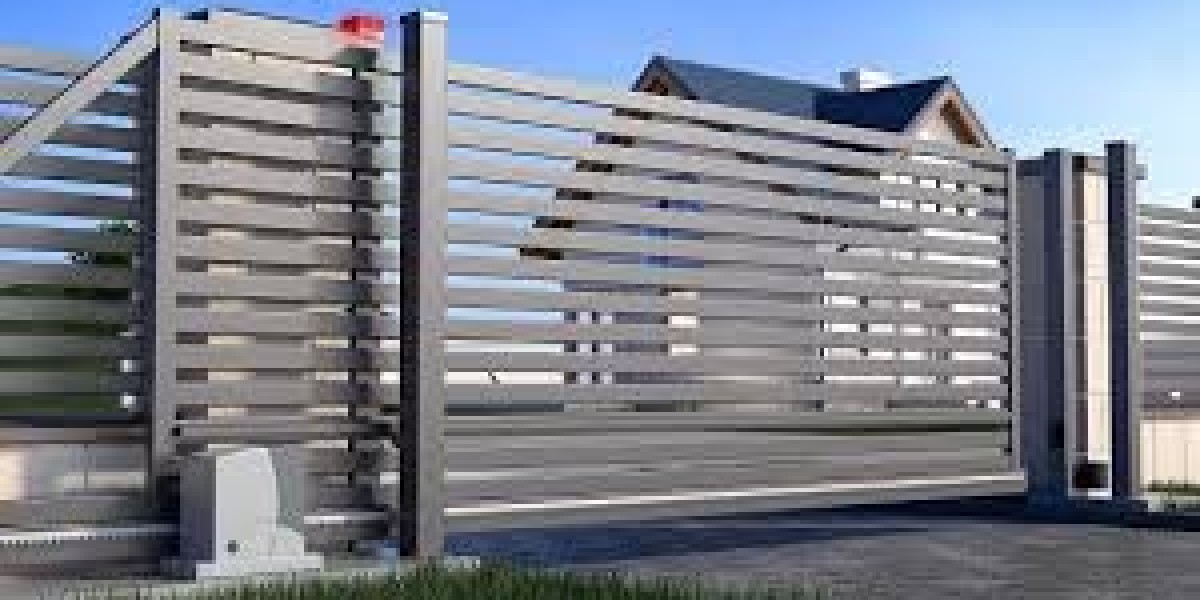Installing a sliding gate is an excellent way to enhance security, privacy, and the overall appearance of your property. But before you start your project, it’s important to know whether you need planning permission. Rules can vary depending on your property type, gate height, and whether your gate faces a public road.
This comprehensive guide explains everything you need to know about sliding gate regulations, automatic gate planning permission, and residential gate installation rules in Australia especially if you’re located in Guildford NSW.
Understanding Planning Permission for Sliding Gates
In most residential areas, you don’t always need formal planning permission to install a sliding gate but there are exceptions. Local councils often have regulations that determine gate height, placement, and automatic operation safety.
Here’s a quick summary:
No planning permission is usually required for gates under a certain height (commonly 1.2m for front boundaries and 2m for side/rear boundaries).
Permission may be required if your gate opens onto a public footpath or road.
Automatic or electric sliding gates may require approval for safety compliance.
To stay compliant, it’s best to check with your local council before installation. Each council including those in NSW may interpret boundary and visibility rules differently.
Common Sliding Gate Regulations in Australia
Every state and local council in Australia has specific sliding gate regulations. These rules ensure public safety, proper visibility, and property boundary integrity.
Gate height and boundary restrictions
Front boundary fences and gates are usually restricted to 1.2 metres in height when facing the street.
Side and rear boundaries are often allowed up to 2 metres high without special permission.
Heritage or corner properties may have stricter visibility and design limits.
Before building, verify the exact boundary restrictions through your local planning authority to avoid future disputes or penalties.
Gate automation and safety
If you’re installing an automatic sliding gate, compliance with Australian safety standards (AS/NZS 60335.2.103) is mandatory. This ensures your gate system has appropriate sensors, manual release, and safety stops to prevent accidents.
Professional installers, like A TO Z Fabrication PVT LTD, can ensure your system meets both mechanical and electrical safety requirements.
When You Need Planning Permission for a Sliding Gate
You’ll likely need formal planning permission in these situations:
Your sliding gate opens outward onto a public footpath or roadway.
The height exceeds local limits (commonly 1.2m–2m).
The property is part of a heritage-listed site or conservation area.
The gate installation affects visibility or road safety.
The automation system involves substantial electrical works requiring certification.
If any of these apply, you must submit a development application (DA) to your local council before construction begins.
Automatic Gate Planning Permission: What You Should Know
Automatic gates are becoming increasingly popular for both residential and commercial properties. However, adding motors and electronic controls introduces new considerations.
Keep in mind:
Power supply and safety features must meet Australian electrical standards.
Motion sensors, photoelectric beams, and manual overrides are essential for compliance.
Some councils require a certified installer’s report confirming that your automatic gate meets all operational safety rules.
Choosing an expert team, like A TO Z Fabrication PVT LTD, ensures your automatic sliding gate meets legal and safety standards from start to finish.
Residential Gate Installation Rules and Council Compliance
Before installing a residential sliding gate, review your local development control plan (DCP). This outlines specific conditions related to:
Material types (such as Colorbond, aluminium, or steel)
Gate location and alignment with fences
Noise and motor operation times
Access for pedestrians and emergency services
Following these rules helps prevent future disputes or council penalties.
If you’re in Guildford NSW, our team at A to Z Fabrication PVT LTD can help you navigate the process, ensuring your sliding gate Guildford NSW installation is smooth, compliant, and stress-free.
Benefits of Installing a Sliding Gate
Aside from compliance, sliding gates offer practical and aesthetic benefits:
Space-efficient design ideal for narrow driveways.
Improved property security and privacy.
Low maintenance when fabricated from durable materials like steel or aluminium.
Smart automation features compatible with modern home systems.
With professional fabrication and installation, your sliding gate can deliver long-term performance and style.
How A TO Z Fabrication PVT LTD Can Help
At A TO Z Fabrication PVT LTD, we specialize in custom sliding gates, automatic systems, and metal fabrication for homes and businesses across NSW.
Our expert team provides:
Regulation-compliant gate designs
Automatic gate installation and wiring
Custom fabrication in steel, aluminium, or Colorbond
Professional consultation for council approvals and boundary alignment
Whether you’re upgrading your entrance or installing a new sliding gates in Guildford NSW, we’ll handle everything from design to final installation ensuring compliance and quality craftsmanship.
Conclusion
So, do you need planning permission for a sliding gate?
In most cases, not always but if your gate exceeds height limits, opens onto public land, or includes automation, you’ll likely need approval.
To stay compliant, consult your local council and work with a trusted fabricator who understands both gate regulations and construction standards.
For expert advice, fabrication, and installation, Contact us A TO Z Fabrication PVT LTD today your reliable partner for high-quality sliding gates in NSW.
FAQs
1. How high can my sliding gate be without permission?
Most councils allow gates up to 1.2m in the front and 2m at the rear before needing approval.
2. Do automatic gates need council approval?
Yes, if the automation affects public safety or exceeds electrical installation limits.
3. Can I install a sliding gate on a shared driveway?
Only if all property owners agree and boundaries are clearly defined.
4. Are there restrictions on gate materials?
Some heritage or design control zones may limit materials or colors.
5. How long does council approval take for a gate installation?
Typically, 2–6 weeks depending on your local council’s review process.






